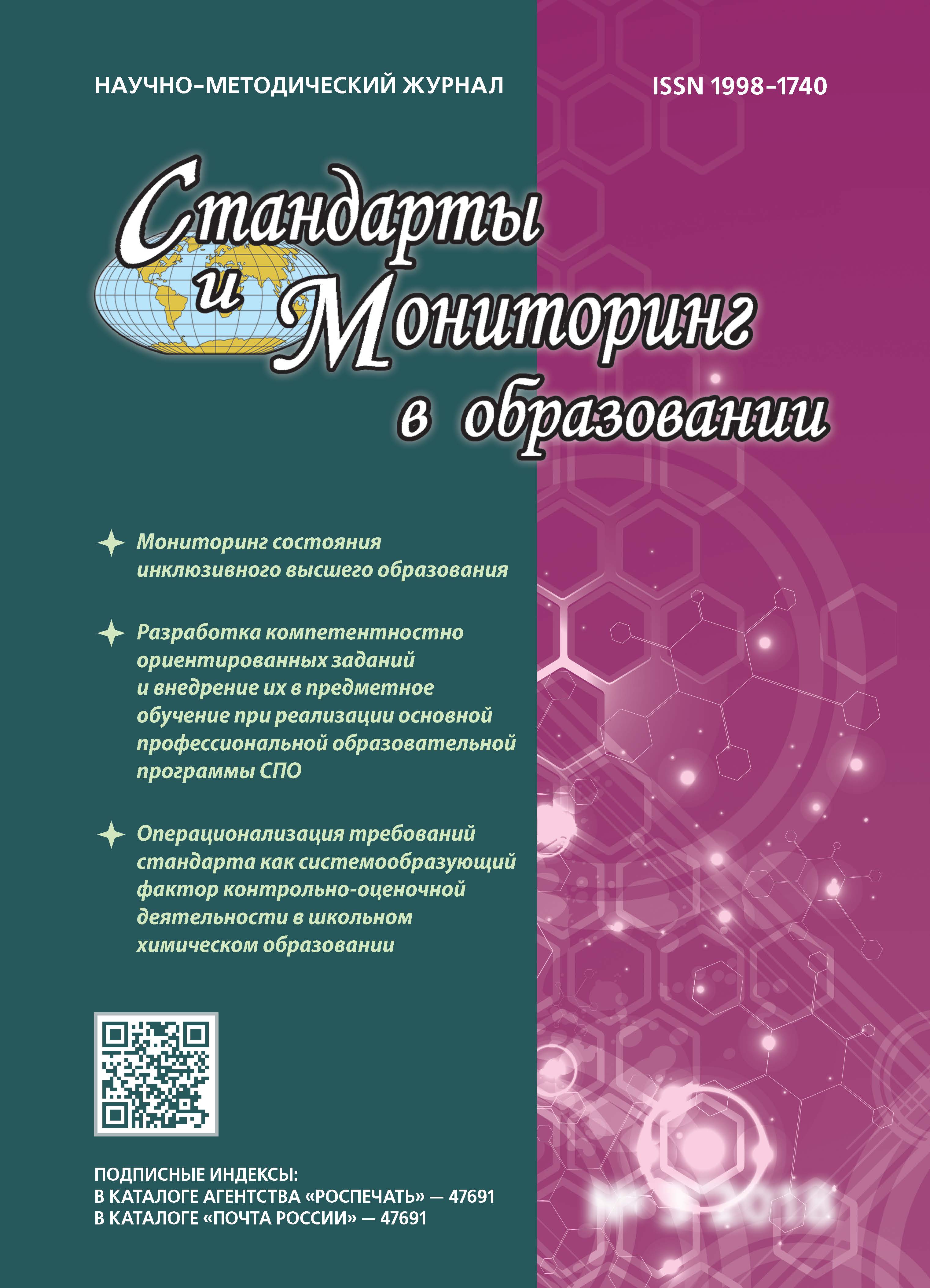from 01.01.1992 to 01.01.2025
Glazov, Izhevsk, Russian Federation
The technique and results of an assessment of Abstractness of more than 20 modern school textbooks on biology, geography, physics and chemistry are considered by method of pair comparisons. Thus it is assumed that didactic complexity of the textbook is mainly determined by the level of Abstractness of the material stated in it and depends on: the variety and Abstractness of qualitative explanations, their isolation from everyday life (i); the complexity of mathematical methods and models, variety of the solved quantitative problems (ii). The levels of Abstractness of each textbook are determined, their distribution in two-dimensional space of attributes (i) and (ii) is studied. The received results allow to range textbooks on their didactic complexity.
didactics, qualimetry, mathematical methods, method of pair comparisons, pedagogy, pedagogical expertise, complexity, learning theory.
Уровень образования во многом определяется качеством используемого учебника,его сложностью и понятностью для ученика.Не следует путать сложность текста с количествомсодержащейся в нем информации, которая зависит от объема (количества слов, формул, рисунков). Существуют различные подходы к проблеме анализа учебных текстов, определения ихсложности, информативности и других характеристик [1, 4, 7]. В книге Я.А. Микка [8] выделяются следующие компоненты сложности текста:
· информативность;
· лингвистическая сложность;
· ясность структуры;
· абстрактность изложения [8].
1. Avanesov V.S. Teoriya kvantovaniya uchebnykh tekstov [Theory of educational texts quantization]. Pedagogicheskie izmereniya [Pedagogical measurements]. 2014, I. 1, pp. 62-77.
2. Bespal’ko V.P. Teoriya uchebnika: Didakticheskiy aspect [The theory of the textbook: The didactic aspect]. Moscow, Pedagogika Publ., 1988. 160 p.
3. Bitinas B. Mnogomernyy analiz v pedagogike i pedagogicheskoy psikhologii [Multivariate analysis in pedagogy and educational psychology]. Vil’nyus Publ., 1971, 347 p.
4. Iudin A.A., Ryumin A.M. Kontent - analiz tekstov: komp’yuternye tekhnologii [Content - analysis of texts: computer technology: studies. allowance]. Nizhniy Novgorod, 2010, 37 p.
5. Lavrushina E.G., Slugina N.L. Teoriya sistem i sistemnyy analiz [Systems theory and systems analysis studies. allowance]. Vladivostok, VGUES Publ., 2007, 171 p.
6. Mayer R.V. Avtomatizirovannyy metod otsenki kolichestva razlichnykh vidov informatsii i ee slozhnosti v fi zicheskom tekste s pomoshch’yu PEVM [An automated method for estimating the number of diff erent kinds of information and the complexity of the physical text via PC]. Izvestiya vysshikh uchebnykh zavedeniy [News of higher educational institutions]. 2014, I. 3(31), pp. 200 - 209.
7. Mayer R.V. Klassifi katsiya tem shkol’nogo kursa fi ziki na osnove otsenki ikh fi zicheskoy i matematicheskoy slozhnosti [Classifi cation of the school course of physics on the basis of assessment of their physical and mathematical complexity]. Innovatsii v obrazovanii [Innovations in Education]. 2014, I. 9, pp. 29-38.
8. Mikk Ya.A. Optimizatsiya slozhnosti uchebnogo teksta: v pomoshch’ avtoram i redaktoram [Optimization of the complexity of the educational text: to help authors and editors]. Moscow, Prosveshchenie Publ., 1981, 119 p.
9. Oborneva I.V. Avtomatizirovannaya otsenka slozhnosti uchebnykh tekstov na osnove statisticheskikh parametrov. Kand. Diss [Automated estimation of complexity of educational texts on the basis of statistical parameters. Kand. Diss]. Moscow, 2006, 165 p.







